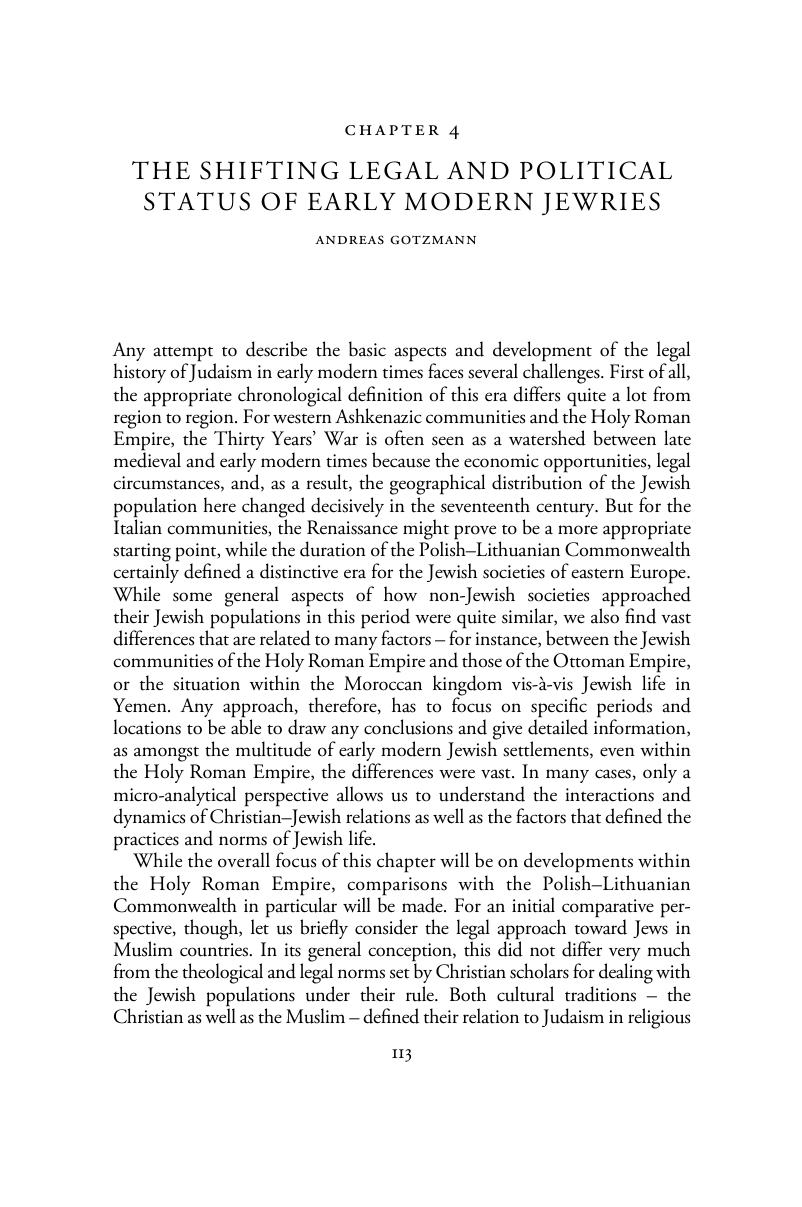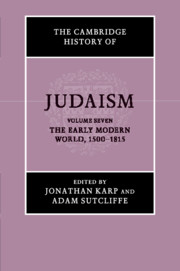Book contents
- The Cambridge History of Judaism
- The Cambridge History of Judaism
- The Early Modern World, 1500–1815
- Copyright page
- Dedication
- Contents
- Figures
- Additional material
- Introduction
- Part I The World of Early Modern Jewry, c. 1500–1650
- Chapter 1 The Catholic Church and the Jews
- Chapter 2 Judaism and Protestantism
- Chapter 3 The Rise of Ottoman Jewry
- Chapter 4 The Shifting Legal and Political Status of Early Modern Jewries
- Chapter 5 Jews and the Early Modern Economy
- Chapter 6 The Early Modern Jewish Community and its Institutions
- Part II Themes and Trends in Early Modern Jewish Life
- Part III The Jewish World, c. 1650–1815
- Index
- References
Chapter 4 - The Shifting Legal and Political Status of Early Modern Jewries
from Part I - The World of Early Modern Jewry, c. 1500–1650
Published online by Cambridge University Press: 10 November 2017
- The Cambridge History of Judaism
- The Cambridge History of Judaism
- The Early Modern World, 1500–1815
- Copyright page
- Dedication
- Contents
- Figures
- Additional material
- Introduction
- Part I The World of Early Modern Jewry, c. 1500–1650
- Chapter 1 The Catholic Church and the Jews
- Chapter 2 Judaism and Protestantism
- Chapter 3 The Rise of Ottoman Jewry
- Chapter 4 The Shifting Legal and Political Status of Early Modern Jewries
- Chapter 5 Jews and the Early Modern Economy
- Chapter 6 The Early Modern Jewish Community and its Institutions
- Part II Themes and Trends in Early Modern Jewish Life
- Part III The Jewish World, c. 1650–1815
- Index
- References
Summary

- Type
- Chapter
- Information
- The Cambridge History of Judaism , pp. 113 - 138Publisher: Cambridge University PressPrint publication year: 2017
References
Select Bibliography
- 1
- Cited by



